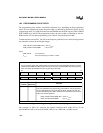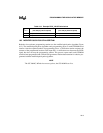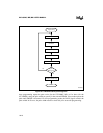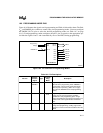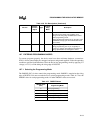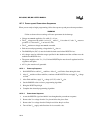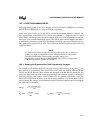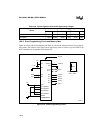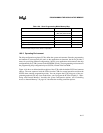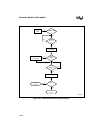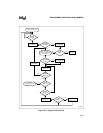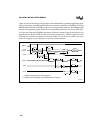
16-15
PROGRAMMING THE NONVOLATILE MEMORY
16.8 SLAVE PROGRAMMING MODE
Slave programming mode allows you to program and verify the entire OTPROM array, including
the PCCBs and UPROM bits, by using an EPROM programmer.
In this mode, ports 3 and 4 serve as the PBUS, transferring commands, addresses, and data. The
least-significant bit of the PBUS (P3.0) controls the command (1 = program word; 0 = dump
word) and the remaining 15 bits contain the address of the word to be programmed or dumped.
Some port 2 pins provide handshaking signals. The AINC# signal controls whether the address
is automatically incremented, enabling programming or dumping sequential OTPROM locations.
This speeds up the programming process, since it eliminates the need to generate and decode each
sequential address.
NOTE
If a glitch or reset occurs during programming of the security key, an unknown
security key might accidentally be written, rendering the device inaccessible
for further programming. To prevent this possibility during slave
programming, program the rest of the OTPROM array before you program the
CCB security-lock bits (CCB0.6 and CCB0.7).
16.8.1 Reading the Signature Word and Programming Voltages
The signature word identifies the device; the programming voltages specify the V
PP
and V
CC
volt-
ages required for programming. This information resides in the test ROM at locations 2070H,
2072H, and 2073H; however, these locations are remapped to 0070H, 0072H, and 0073H. You
can use the dump word command in slave programming mode to read the signature word and pro-
gramming voltages at the locations shown in Table 16-8. The external programmer can use this
information to determine the device type and operating conditions. You should never write to
these locations. The voltages are calculated by using the following equation (after converting the
test ROM value to decimal).
Voltage =
V
CC
(40H) = V
PP
(0A0H)
=
20 test ROM value×
256
------------------------------------------------------
20 64×
256
-------------------
5 volts=
20 160×
256
----------------------
12.5 volts=




